The universe of art is so vast that it is exceedingly difficult—almost impossible—to reduce recommendations to a mere ten among the enormous number of pieces made and valued throughout the history of the world. But we made a real effort by consulting various experts to determine the works that receive the greatest recognition. So, consider our short list as only a tiny window into the world of art, a whimsical selection of the best-known pieces in history.
1. La Venus de Milo
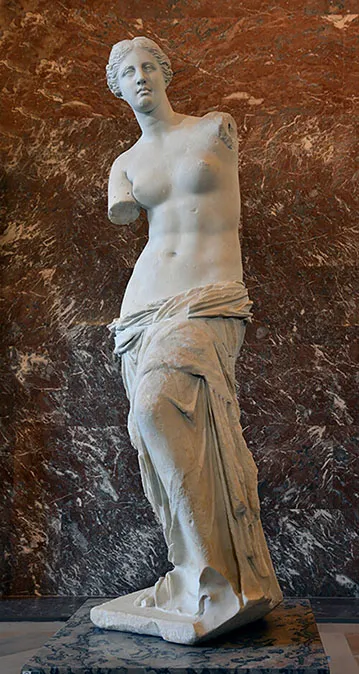
The Venus de Milo is one of the most famous sculptures of Ancient Greece, and its beauty and perfection have been admired for centuries. She is the Greek goddess Aphrodite, also known as Venus in Roman mythology. The sculpture depicts the goddess of beauty and love nude with an expression of tranquility on her face, and it is speculated that she originally held an apple in her right hand, a symbol of the judgment of Paris. It is said she was awarded a golden apple in one of the best-known stories of Greek mythology. In the myth, Eris, the goddess of discord, annoyed at not having been invited, shows up at Peleus’s wedding, leaving behind a golden apple engraved with the phrase “for the most beautiful.” Three of the goddesses present (Hera, Athena, and Aphrodite) fight over the apple, so the shepherd prince of Troy, Paris, is chosen to judge. The three goddesses try to bribe him by offering him gifts, but in the end, he chooses Aphrodite, who had promised him the love of the most beautiful woman in the world. The origin of the expression “the bone of contention” comes from this myth.
The Venus de Milo was created around 100 B.C. and can be found in the Louvre Museum in Paris, France.
2. The Last Supper by Leonardo da Vinci
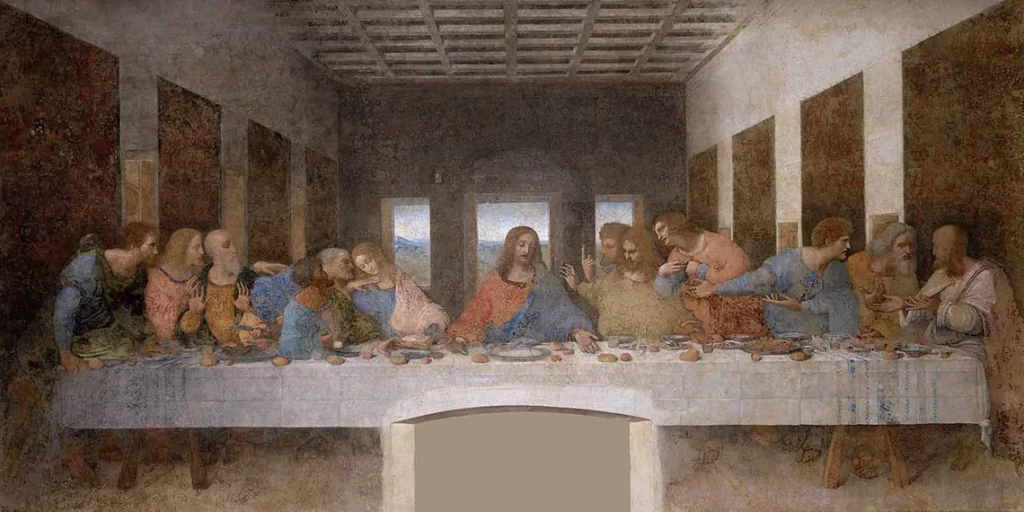
A mural painting finished in the 15th century, The Last Supper is a masterpiece of the Italian Renaissance and one of the most famous and studied paintings in the world. It is currently on the wall of the dining room of the Convent of Santa Maria delle Grazie in Milan, Italy.
The work represents the last supper of Jesus with his twelve apostles, as described in the Gospel of Saint John. In the scene, the Messiah is shown in the center of the table surrounded by his apostles, each of whom is depicted reacting according to their personality. It is revered for its innovative technique and the richness of its symbolism, including details such as the sad expression on Jesus’s face and the very composition that divides the apostles into groups of three (the divine) and four (the mundane).
3. The Mona Lisa by Leonardo da Vinci
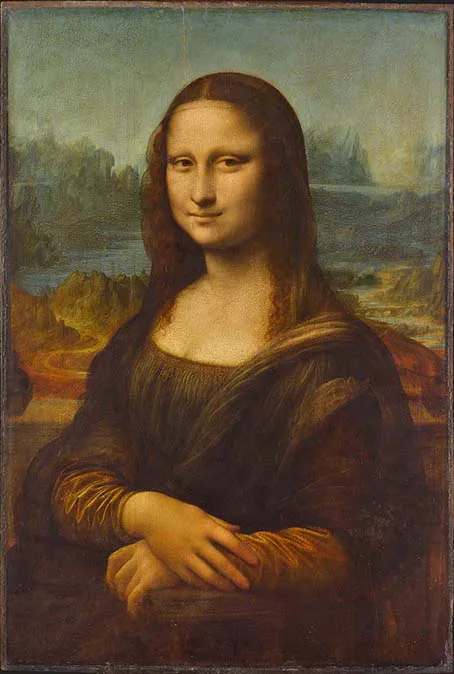
Also known as La Gioconda, it is probably the most famous and iconic work of art in the world. It is a 16th century oil painting that is currently on display in the Louvre Museum in Paris, France.
La Gioconda is the portrait of Lisa Gherardini, wife of the Florentine merchant Piero del Giocondo, hence its name. Leonardo’s innovative sfumato technique with which he captures the woman’s luminosity and expression, together with the landscape background where he develops the so-called aerial or bluish perspective, have made it a symbol of Renaissance art and Italian culture. Many visitors to the Louvre wait hours to see it.
4. David by Michelangelo
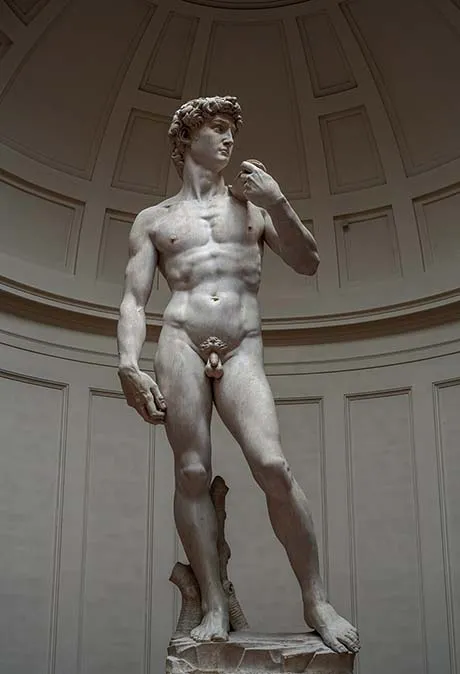
David is a sculpture created between 1501 and 1504. It represents the biblical hero who defeated Goliath with a slingshot. It is also a representation of the perfection of the human body, as well as courage and determination. The sculpture is over 15 feet tall and is carved from a block of white marble. It is located in the Accademia Gallery in Florence, Italy, Italia, and is considered one of the most famous and admired works of art in the world.
5. The ceiling of the Sistine Chapel by Michelangelo
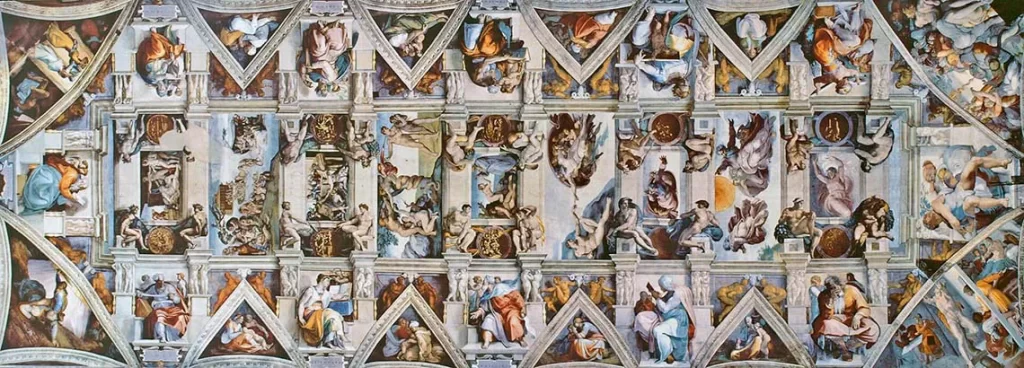
A series of frescoes created by the Italian Renaissance artist Michelangelo between 1508 and 1512. The chapel is located in the Vatican in Rome, Italy, where the cardinals meet to elect the pope. These frescoes represent the creation of the world, the biblical story, and salvation. The Creation of Adam stands out: the iconic image of the hand of God and that of Adam about to touch is visible.
Michelangelo worked on this creation for four years. His work became a point of reference due to its beauty and the technical skill required to make it. Millions of people visit the chapel each year.
6. The Chess Game by Sofonisba Anguissola
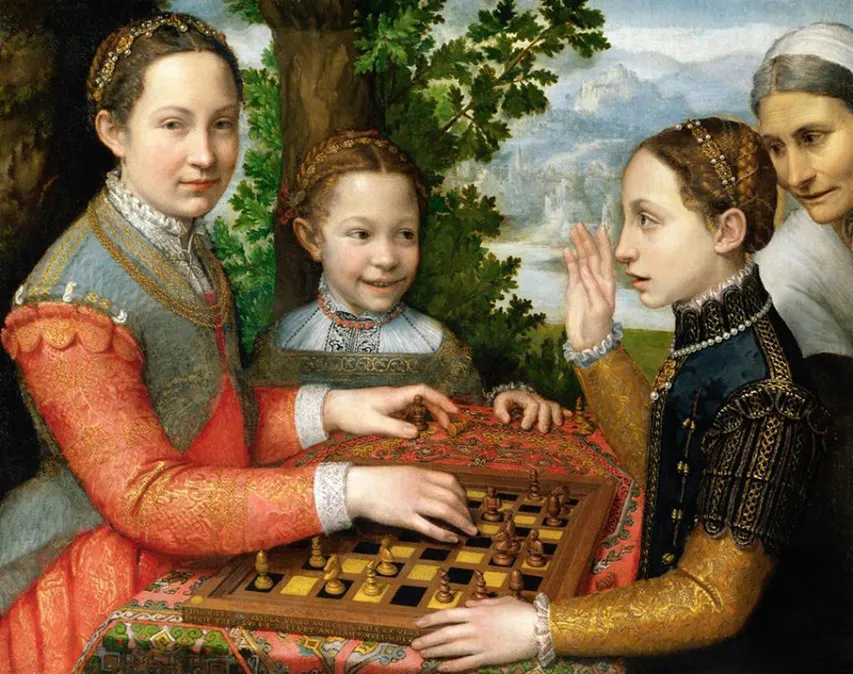
Sofonisba was one of the first women in the history of art to gain some recognition and paved the way for more women to become artists during the Italian Renaissance. The Chess Game, sometimes referred to as The Game of Chess, is a painting created around the year 1555. It depicts a game between two of the artist’s younger sisters, with an even younger sister and a maid as onlookers.
Sofonisba’s work is characterized by portraying non-religious daily life and human expression, with great technical skill to create realistic details. This painting is also full of symbolism. At the time, it was said that women should not play chess (or do many other things that were considered natural for men), and Sofonisba deliberately portrays women to demonstrate their intelligence and courage. It is on display in the National Museum of Poland.
7. Las Meninas by Diego Velázquez
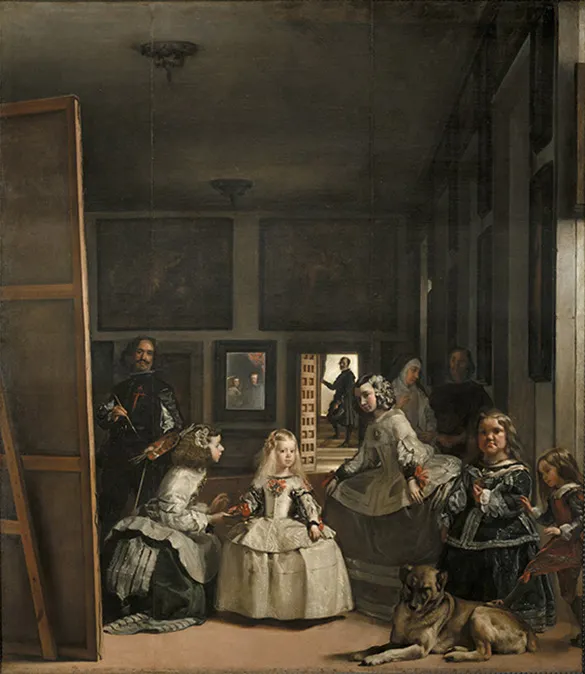
Painting created in 1656 that portrays the infant Margarita Teresa of Austria, daughter of King Philip IV of Spain, surrounded by her ladies-in-waiting, a jester, and Velázquez himself, who depicts himself painting the portrait. It is one of the most famous works of art due to the complexity of the composition, the use of perspective, the skill used to capture light and shadow, and its rich symbolism. It is on display at the, Prado Museum in Madrid, Spain.
8. Starry Night by Vincent van Gogh
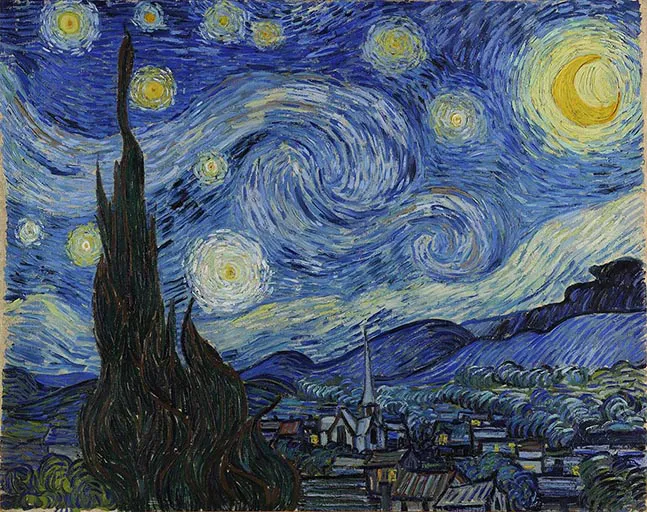
Created in 1889, this is one of the most famous paintings by the Post-Impressionist artist. The painting represents a twilight landscape with a starry sky over a village, where the painter was confined in a rest house. Its short brushstrokes, as well as the innovative and visionary way in which Van Gogh portrays light and color help convey emotional intensity.
Considered a masterpiece of universal art, Starry Night is one of the most famous works in the Museum of Modern Art in New York, and is a popular destination for art aficionados from around the world.
9. Guernica by Pablo Picasso
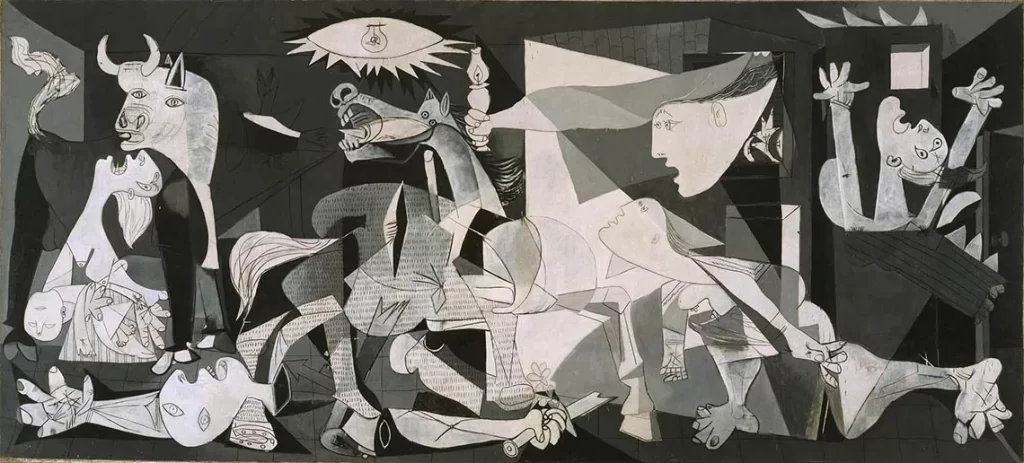
The Spanish artist created this painting in 1937 in response to the bombing of the city of Guernica during the Spanish Civil War. An example of Picasso’s cubist style, Guernica represents the suffering and tragedy of war and the horror and devastation left in its wake. Its impressive size and dramatic composition are shocking, as the painting incorporates images of twisted and terrified animals and humans in dark and gloomy colors that convey distress.
It is one of the most famous and emblematic works of modern art and one of the main attractions of the Reina Sofía Museum in Madrid, Spain.
10. Woman Leaving the Psychoanalyst by Remedios Varo

A 1960 piece by the famous Spanish-Mexican surrealist painter. The painting depicts a woman coming out of a strange and labyrinthine building, a mysterious, surreal city visible in the background. The figure of the woman, with her long dress and white hair, is an example of Varo’s interest in the female figure and her struggle to find her place in a world dominated by men.
The painting is in the Museum of Mexican Modern Art in Mexico City and is one of the most important works on display.
If you love art, we are certain you will enjoy our article on the most prolific Mexican visual artists and their works in the art section of this blog





